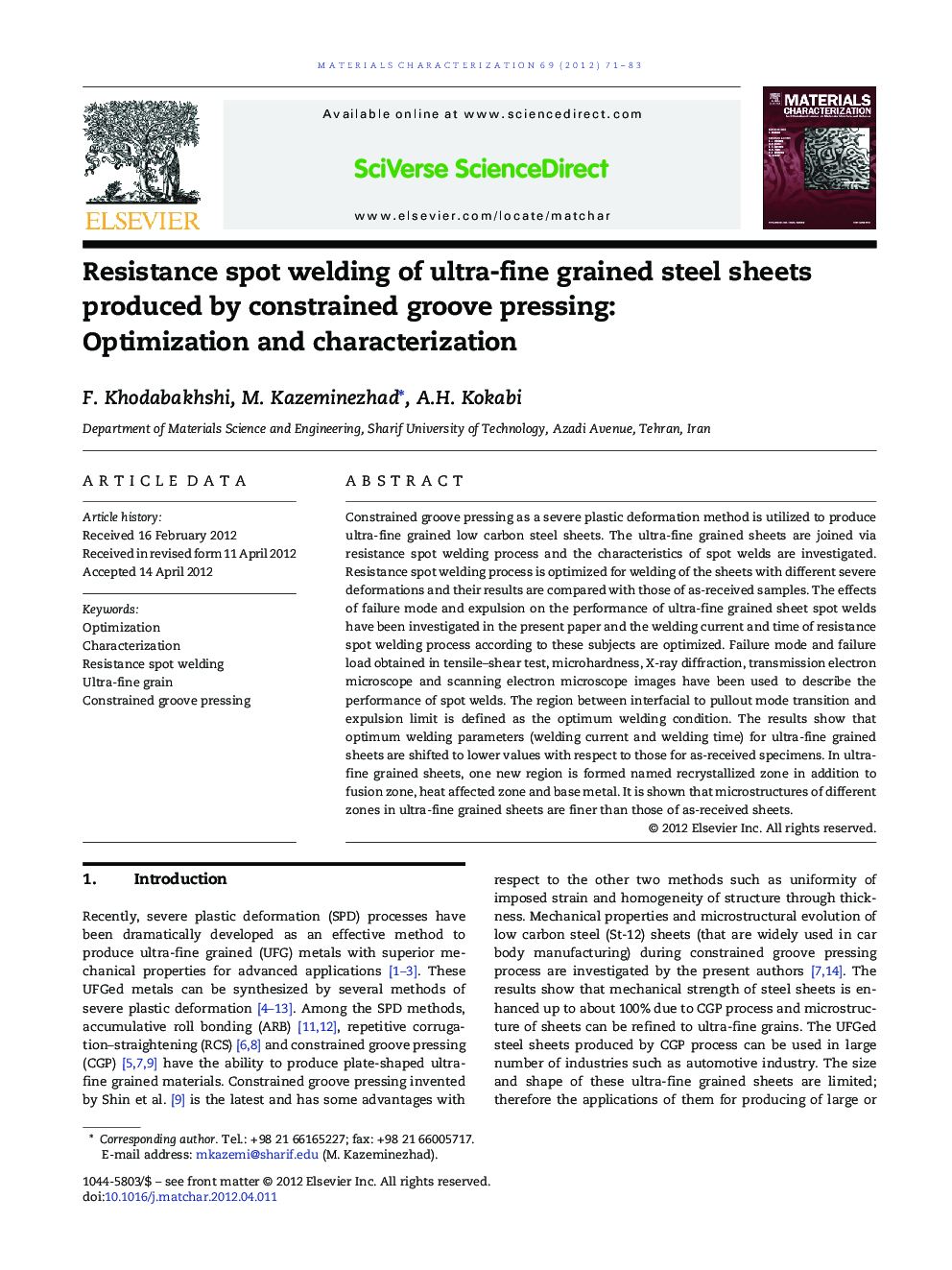| Article ID | Journal | Published Year | Pages | File Type |
|---|---|---|---|---|
| 1571454 | Materials Characterization | 2012 | 13 Pages |
Constrained groove pressing as a severe plastic deformation method is utilized to produce ultra-fine grained low carbon steel sheets. The ultra-fine grained sheets are joined via resistance spot welding process and the characteristics of spot welds are investigated. Resistance spot welding process is optimized for welding of the sheets with different severe deformations and their results are compared with those of as-received samples. The effects of failure mode and expulsion on the performance of ultra-fine grained sheet spot welds have been investigated in the present paper and the welding current and time of resistance spot welding process according to these subjects are optimized. Failure mode and failure load obtained in tensile–shear test, microhardness, X-ray diffraction, transmission electron microscope and scanning electron microscope images have been used to describe the performance of spot welds. The region between interfacial to pullout mode transition and expulsion limit is defined as the optimum welding condition. The results show that optimum welding parameters (welding current and welding time) for ultra-fine grained sheets are shifted to lower values with respect to those for as-received specimens. In ultra-fine grained sheets, one new region is formed named recrystallized zone in addition to fusion zone, heat affected zone and base metal. It is shown that microstructures of different zones in ultra-fine grained sheets are finer than those of as-received sheets.
► Resistance spot welding process is optimized for joining of UFG steel sheets. ► Optimum welding current and time are decreased with increasing the CGP pass number. ► Microhardness at BM, HAZ, FZ and recrystallized zone is enhanced due to CGP.
